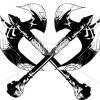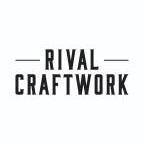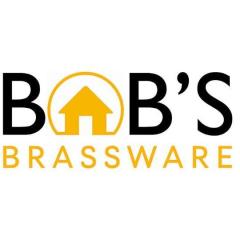-
Posts
7,776 -
Joined
-
Last visited
Contact Methods
-
Website URL
https://www.rw-leatherworks.com
Profile Information
-
Gender
Male
-
Location
Flint, Michigan, USA
-
Interests
Leather work, sewing and sewing machines
LW Info
-
Leatherwork Specialty
Handgun holsters, tooled belts, bridle leather belts, custom made to order leather items, sewing patches onto bikers' vests, alterations, zipper replacements and repairs of leather goods.
-
How did you find leatherworker.net?
Google search
Wizcrafts's Achievements

Leatherworker.net Regular (4/4)
-
@FDC Sweet!
-
I believe that the Juki LU-1508 series may be too heavy duty for the thinner leather you want to sew. This series is beefed up in order to sew into denser and thicker stacks of material. The DNU-1541(s) is probably a better match. It can sew over thick seams and has a thread range more suitable for thinner and softer leather and broad cloth, or denim. Now, if you will be sewing leather or heavy canvas jackets, with flannel, quilted, or fur linings, the LU-1508NH is the better machine. But, it may eat thin vest linings.
-
Bingo! This is a much overlooked issue among leathercrafters who sew on machines. Some of use have a room full of walking foot machines of varying capacities. I do! One thing they all have in common is their lust for linings and broadcloth lunches! They love to eat these thin, soft fabrics. If you are going to be sewing this kind of cloth, you need a bottom feed machine with a flat foot. The actual machine can be any ancient Singer tailoring machine, like a 31-15, or 96k40. Juki makes some superior high speed bottom feeders that have oil pumps in an oil bath and can sew at 8000 stitches per minute! My first industrial sewing machine was a Singer 96k40. I used it to sew a soft leather vest and a lining. But, when I tried to sew on a panel with fringes, that machine balked. I bought a walking foot machine that was better equipped to go over thicker seams and denser leather. You can often find tailoring machines for sale in local ads or marketplaces. A lot of them will have a clutch motor that you can either learn to feather, or replace with a servo motor.
-

Singer 107 W1 Stitch Length not changing
Wizcrafts replied to ohLyssa's topic in Leather Sewing Machines
@ohLyssa The taper on the end of the stitch length rod is what does the adjusting. You need to get somebody with a machine shop to turn the rod and recreate a nice long taper that ends in a sharp point. That system is long obsolete. I have the same machine and baby the adjuster any time I move it. -
Tom, those links don't show the feet unless one is a member of Facebook AND has joined that Facebook Group.
-
Have you read my article about how to post photos to our forum?
-
I don't have any experience with this motor. I have been using analog servo motors exclusively since about 2012 or 2013 I still have my previous digital motor with the gradient light beam disrupter wafer in a closet in my trailer.
-
I've been watching this thread grow in frustration as people discover the weaknesses of the various servo motors they've purchased, only to find that most were wanting in either slow speed torque or starting speed. I see plenty of reports of high torque servo motors that start with a jerk at anywhere from 50 to 200 rpm. People owning analog, brushed servo motors get a smoother startup from zero, but the torque is so low that a speed reducer may be needed to get the machine to turn over. I want to tell you a story about an analog servo motor that I used to buy for my heavy leather stitchers, and even my walking foot machines. It was called the SewPro 500GR, which was sold by Toledo Industrial Sewing Machines, back in 2012 through about 2016, or maybe 2018. The motor had replaceable brushes (with spares included), a fully adjustable brake lever, and, wait for it ... a built in 3:1 speed reducer. That motor could power almost any sewing machine that was smaller that the 441 clones. It powered my cb4500 via a 3:1 speed reducer, mainly to add punching power at very slow speeds. I drove all over my walking foot machines from zero to its maximum speed without any jerks or hesitation. The motor was reliable and sold like hotcakes. Then, one day the employees went of for lunch and never came back! They shuttered the factory! Poof, gone! For a few years, enterprising folks learned that they could print out gradients onto transparent plastic wafers that replaced the original solid wafers that were moved across the light beam or photocell receiver. The gradient wafers allowed the digital servo motors to start at such a slow speed that it was virtually unnoticeable. The trick was keeping the gradient wafers affixed to the moving control lever. Eventually, we just stopped using those motors and switched to analog motors fed through speed reducers. I personally prefer to use analog servos with either 2:1 or 3:1 speed reducers, rather than a digital servo that starts at a noticeable speed bump. I sacrifice the top speed that I don't really need in exchange for low speed torque and a very smooth startup.
-
@bsshog40 Please read this sticky topic that I started several years ago, which describes the type of machine you need to sew leather.
-
@janosaw, I moved your request to the Leather Sewing Machines forum. You will get better answers in this section.
-

upgrading to oldschool singer 132k6 and 132k7
Wizcrafts replied to VinnyK's topic in Leather Sewing Machines
The Singer 132k6, with the spring loaded follow foot, was actually designed for the buffing wheel industry. I think there was an attachment that secured the center of the wheel and moved it slowly in time with the action of the machine to sew through all of the layers of cloth in a circular spiral pattern. The capacity is 1/2 inch, or 12.5mm. The follow foot is only useful if it can grab a hold of the top surface, like it can in cloth items. I tried sewing slicked leather belts along the edges only to have the foot slide on the top and do nothing to help the feed. As a result, the stitch length varied and I ruined some things until I got wise and sold the machine. Assuming you can get one of them to work, it might be good for upholstery that is thicker than the Adler can handle, or requires a heavier weight thread. The 132 I had was able to handle up to #346 bonded nylon thread. -
I think you might have a good shot at it with a post bed machine that has a roller foot and a roller feed dog.
-
Here is a YouTube video showing a glove sewing machine in operation:
-
Are you aware of glove sewing machines? These are specialty post bed machines that are mounted onto industrial sewing machine tables that can have a servo for precise control. They have a tiny top profile that gets inside the fingers of the gloves. Aside from dedicated glove machines, you could find a used post bed machine that already has a small roller foot and possibly a roller feed dog. These are used to sew hats and caps, or arm holes in shirts and vests.








